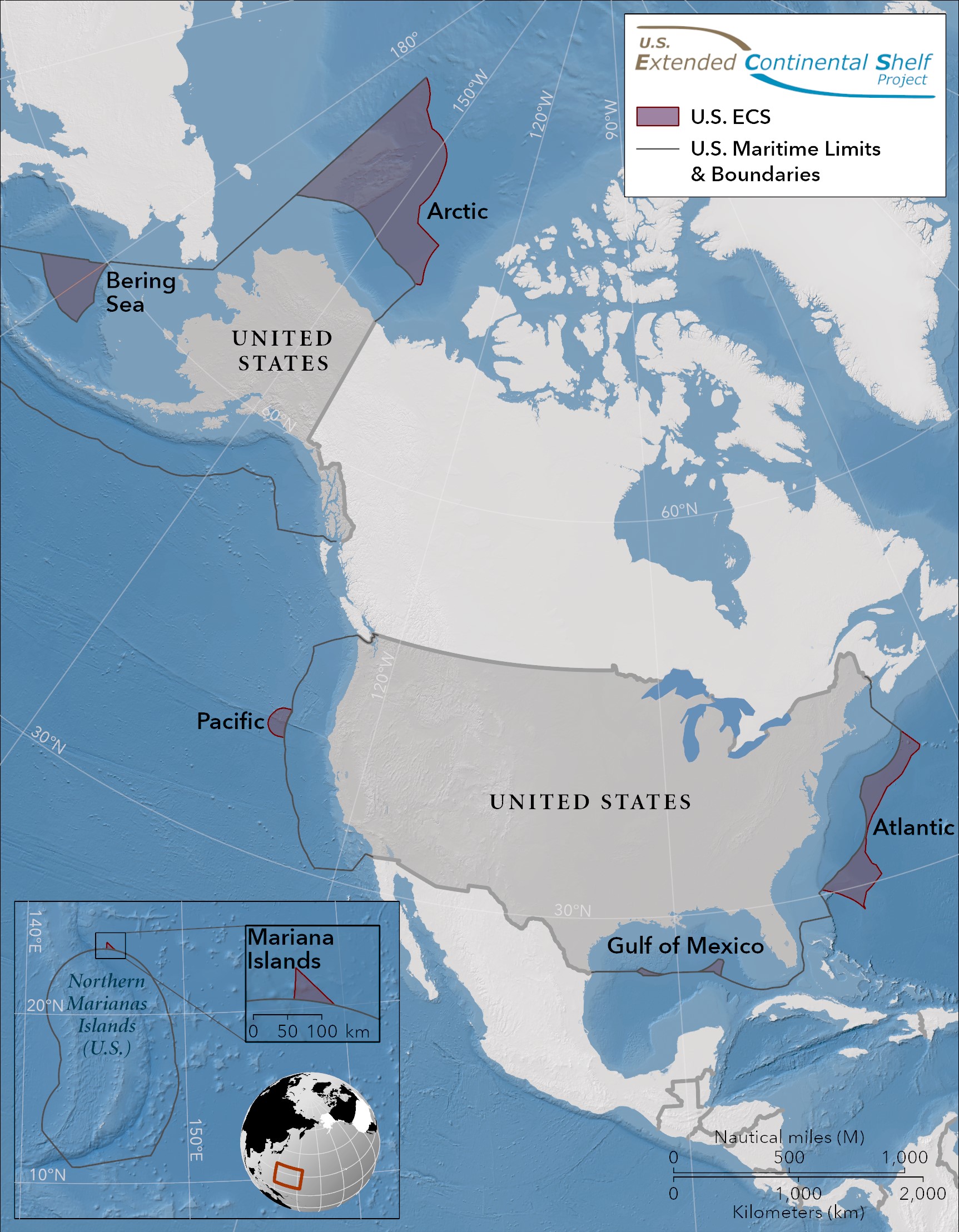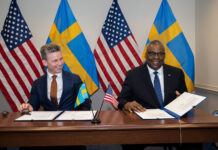A seemingly inconspicuous note with potential for conflict made its appearance on 19 December 2023, as the US State Department announced an expansion of the extended continental shelf claimed by the United States. The new delineations concern sea areas in the Western Atlantic, the Arctic, the Bering Sea, around the Mariana Islands, in the Gulf of Mexico and in the eastern Pacific.
A map published by the US State Department visualises the changes that have been made. In total, the continental shelf has been extended by around one million square kilometres, according to the Department.

As defined by the United Nations Convention on the Law of the Sea (UNCLOS), a continental shelf is the extent of the land area of a coastal state under the sea. According to Article 76 of UNCLOS, the continental shelf of a coastal state can extend up to a distance of 200 nautical miles. In addition, the right to an extended continental shelf is granted, which concerns the seabed but not the water column above it. Coastal states have rights to use this space.
The definition of a continental shelf is based on the thickness of the sedimentary rock, the foot of the continental slope, the 2,500-m depth contour and constructed distance lines. In extreme cases an extended continental shelf can reach 350 nautical miles from the baseline, which is the basis for measuring the territorial sea. The determination is carried out by means of geological and geophysical investigations as well as bathymetric mapping. In this case data collection began in 2003 and, according to the US State Department in its announcement, represents the largest offshore mapping effort ever undertaken by the United States.
Once these analyses have been completed, the United Nations Commission on the Limits of the Continental Shelf will review the application. The date of entry into force of UNCLOS is decisive for an application. Each country has 10 years after acceding to the Convention by its ratification. In the case of the Arctic, this means that the littoral states’ options for action have come to an end. Denmark was the last eligible nation to submit its request in 2014. The United States, however, is a special case (see below).
Object of desire: the Arctic
The main driver for claims to extend a nation’s continental shelf are the resources suspected or present in the seabed, in particular gas and oil deposits or minerals such as lithium and rare-earth elements. In the wake of climate change the Arctic is increasingly coming into focus. The retreat of the polar ice makes it possible to tap into the deposits of raw materials believed to be there, although the extent to which expectations will be fulfilled remains to be seen. The estimates are mostly based on investigations on land, while the offshore potential has not yet been conclusively evaluated. Russia became active in this regard at an early stage, with Moscow submitting its first application in 2001.
Against this background, it is hardly surprising that more than half of the area now claimed by the United States – 520,400 square kilometres – extends north of Alaska into the Arctic Ocean. The area gained is roughly equivalent to the size of France or Ukraine.
Six countries are affected by the extension of the US continental shelf: the Bahamas, Canada, Cuba, Japan, Mexico and the Russian Federation. There are overlaps with the Bahamas, Canada and Japan. According to the US State Department, arrangements have already been made with Cuba, Mexico and the Russian Federation regarding the border of the extended continental shelf.
The US: a strange beneficiary
Although the United States would like to benefit from UNCLOS in this way and claims “rights under international law to conserve and manage the resources and vital habitats”, it is not a supporter in ipso. Although Washington took part in the UN Conference on the Law of the Sea (1974-1982) and subsequent negotiations, it is not one of the 169 ratifying nations: a fact that attracts criticism, particularly from countries in the so-called Global South.
The US government has not ruled out further expansions of its continental shelf in the future, pointing out that its scientific studies and the associated data collection have not yet been finalised. In this respect the United States benefits from its status, as it is not bound by any deadlines for submitting any claims.











